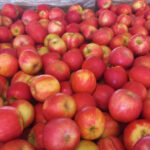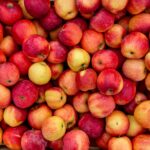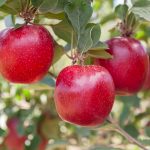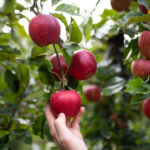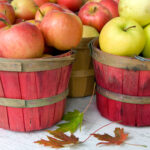Chile: Honeycrisp apple difficult but "worth it", says agronomist

While packouts may be relatively low compared to other varieties, Chilean growers have found a ready market for Honeycrisp apples in North America where a price premium has so far justified the effort. 
Gabriel Aylwin, a field consultant who works with Frusan, says many lessons have been learned in managing the crop since the company introduced Honeycrip in conjunction with Wescott Agri Products and the University of Minnesota in 2005.
After quarantine was processed and evaluations took place, Frusan decided Honeycrisp apples were best suited to production in cooler areas south of Temuco and the first plantings were made in 2009.
He says production now covers 400 hectares.
"We had a lot of problems to learn from in the early years – very large fruit, a lot of bitter pits, post-harvest problems, and gradually year over year we learned from experience here in this country as well as from visits to production zones in the United States, France and South Africa," Aylwin tells www.freshfruitportal.com.
"So, we planted on a commercial scale and we realized it’s a variety with a very good demand for a good product in the United States.
"It’s hard to get to the United States with good quality fruit to supplement the American fruit. But it’s worth it, because the price it has is far superior to the prices of other varieties."
What makes Honeycrisp so challenging is often at the production level, whether it be a tendency toward oversizing, susceptibility to sunburn, or bitter pit which is a particular issue for the younger orchards.
"It’s a variety with low packouts for packing here, and you have to re-pack in the United States. So, the yield from orchard to the final box that reaches the final consumer is very low.
With more mature orchards he says there are fewer problems, "above all physiologically, but you have to refine the fruit load".
"If it exceeds a bit more than the determined number of fruits per square centimeter of the section of the total branch, you then have the alternating problem and that makes production very variable from one year to the next.
"Right now from what I know, if I had to plant Honeycrisp it'd be in La Union further to the south (222km from Temuco).
"With fresher climates, especially in summer, with lower temperatures in terms of maximums and also the minimum, you’d have better condition and quality, and condition for post-harvest."
While as a producer Aylwin has a tendency to focus on the fruit's challenges and physical aspects, he notes the fruit is unique as it is soft but has a crunchiness and juiciness other apple varieties don't have.
"It's like a watermelon," he says.
He adds another group that has planted the variety, albeit on a lower scale, is the consortium Chilean South Apple (Chisa).
Photo: Evan Amos, via Wikimedia Commons

















